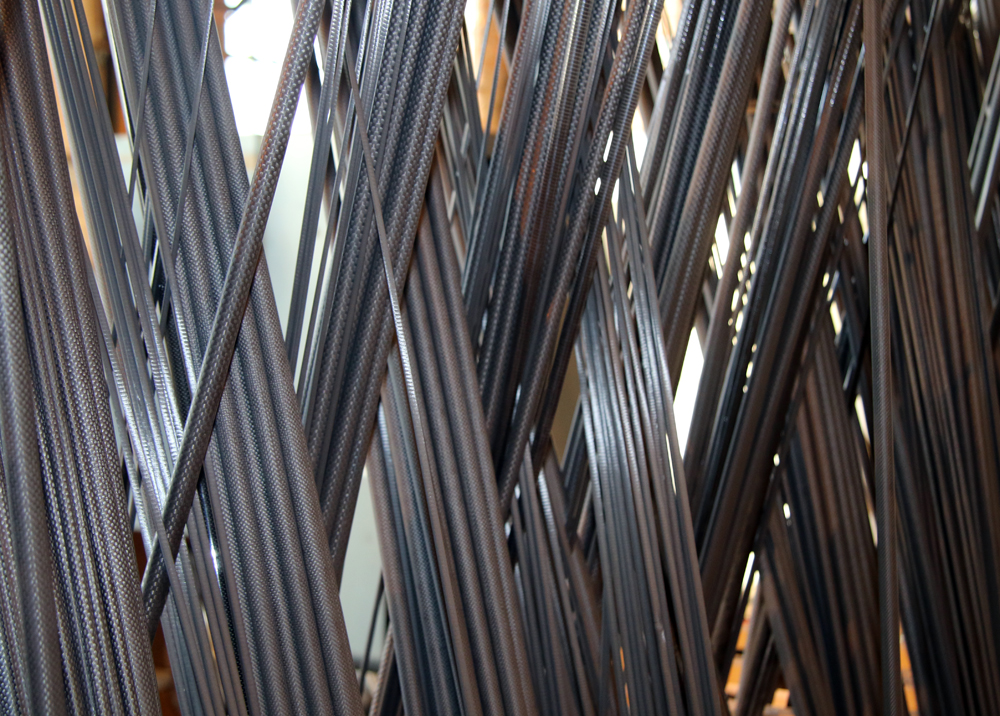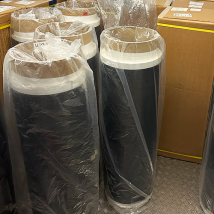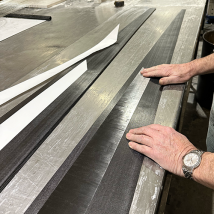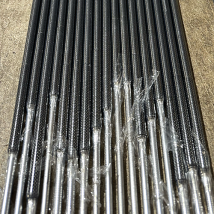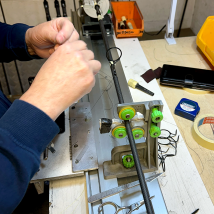Harrison Rod Blanks
We have been making rod blanks in Liverpool since 1989. Making blanks in the UK gives us more control over quality, design, and innovation. It also allows us to offer a wider choice. A lot of what you see in modern blank design started here. Overfit joints for example, were seen on Harrison carp blanks for some time before they were adopted as the standard. We don’t stand still. Every year we have research projects moving things forward. Harrisons also supply carbon fibre to Universities and other industries, and the interchange of ideas working at the forefront of composite developments feeds into our blank manufacturing and keeps us ahead.
Today we offer a huge range of blanks. Some like our Avon 11′ have hardly changed in twenty years. They were right then and hard to improve now. Others like our Trebuchet UFR embody new ideas to produce distance casts and torsional control.
You can buy Harrison blanks and spare sections direct from the factory. The range is so big, it is best to contact us by phone to check stock and pricing. Ask for Mike on 0151 709 5981, or email using the link at the top of the page. You can buy some of the more popular models from Rivercity Tackle or GuidesnBlanks in the UK or Rodhouse in Europe
Rod Blanks we make
- Baby Ballista 11′ 2 1.2lb, 3lb, 3 1/2lb Vesatile semi through action unidirectional blanks for carp and pike unground or matt.
- Ballista Stalker 10 1 3/4 and 2 3/4 two piece through action unground or matt unidirectional.
- Ballista 12′ 2 3/4, 3 and 3 1/2lb, 13′ 3 1/2 and 12′ and 13′ Spod 13′ Heavy Spod unground or matt unidirectional.
- Acurix slim carp blanks in 12′ 2 1/2 2 3/4 and 3lb Very slim close and medium range with 1k butt and UD tip.
- Torrix Carp from 10′ 2 3/4 to 13′ 3 1/2 A modern thin ply carp blank with huge reputation. 1k butt and UD tip.
- Aviator 10 2 3/4 to 13′ 4 1/2lb Our flagship premium carp rod range. 1k carbon to the tip.
- Trebuchet 12′ and 13′ 3 3/4 to 4 1/2lb distance rods for carp.
- Torrix specialist from 11′ 1 1/2 to 12′ 2 1/4 Versatile river and stillwater blanks for chub, barbel and tench.
- Chimera specialist 12′ 1 1/2 to 13′ 2 3/4 River rod blanks with 3k butt and 1k to midway tip.
- Torrix 14′ Surf P and Q range
- Lorhic fly blanks High performance three and four piece blanks.
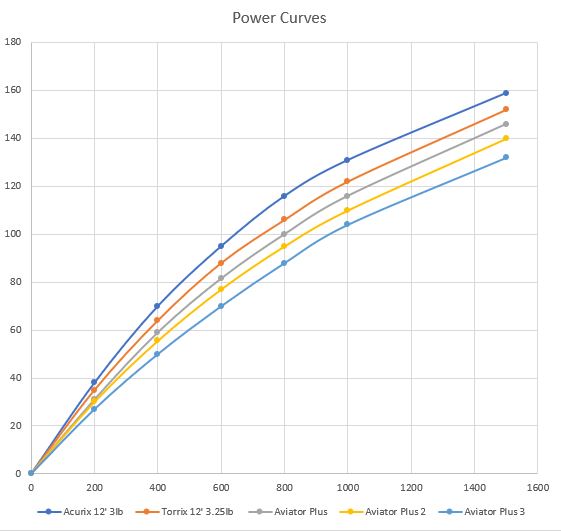
Power Curves
Power curves are a great way we have developed here at Harrisons to check out the differences in both power and action of a blank. We measure deflection against an increasing load and plot it on a graph. The vertical x axis shows deflection and the horizontal y axis shows load. Each line represents a different rod. The most powerful rod is the lowest line on the graph, in this case a 12′ Aviator plus 3 (3 3/4lb). The least stiff rod here is the Acurix 12’3lb.
In this small sample, you can see we make a wide range of actions. Something for everyone. This makes Acurix perfect for smaller waters and the Plus 3 a great long range tool for big Carp.
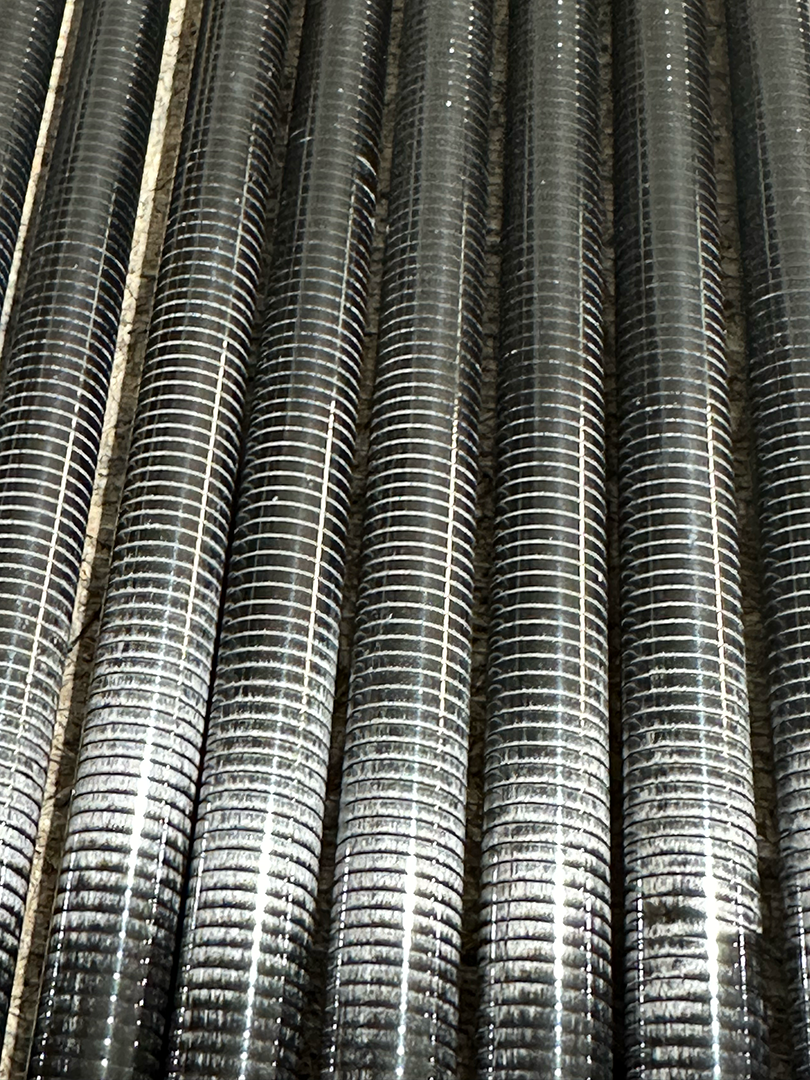
Unground Unidirectional Blank
Unidirectional blanks without woven top layers have a natural glossy spiral finish which is both tough and attractive. Unidirectional carbon may show some natural marks due to variations in the prepreg and fibre tension. .
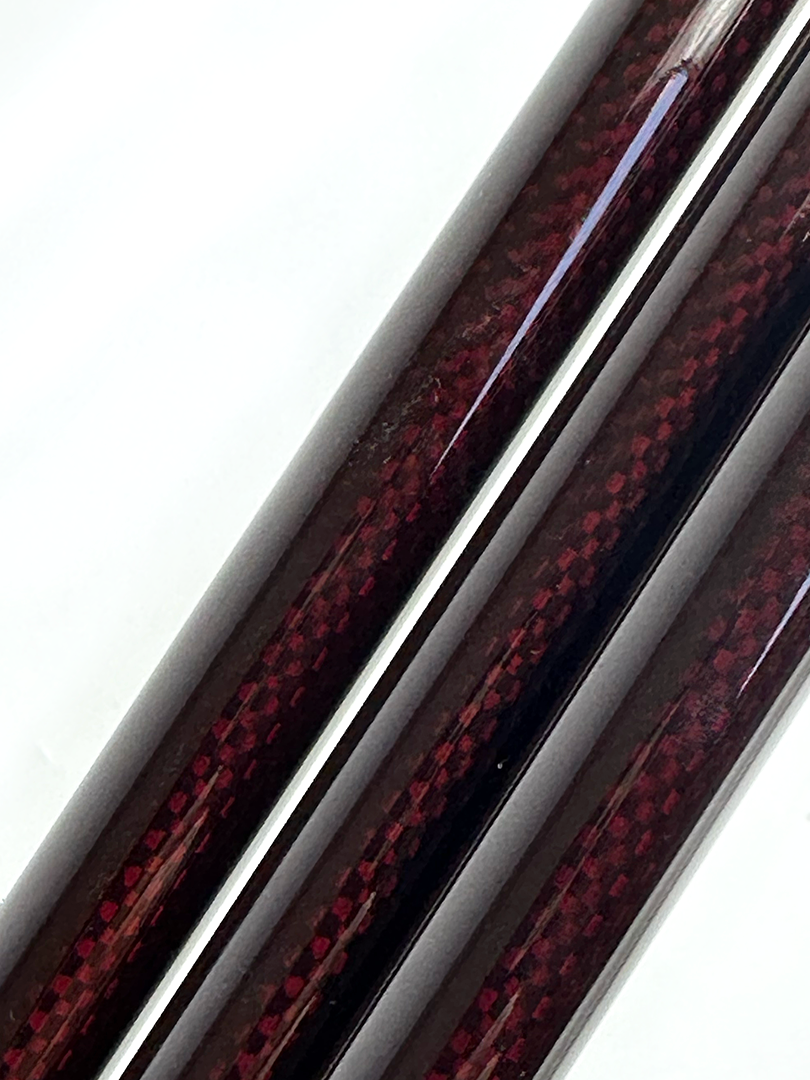
Burgundy coated blanks
For a little extra you can have any of our blanks coated in a burgundy coating. Three coats of a tough modified epoxy are applied to the blank. This coating was developed for marine environments and is tough and attractive.
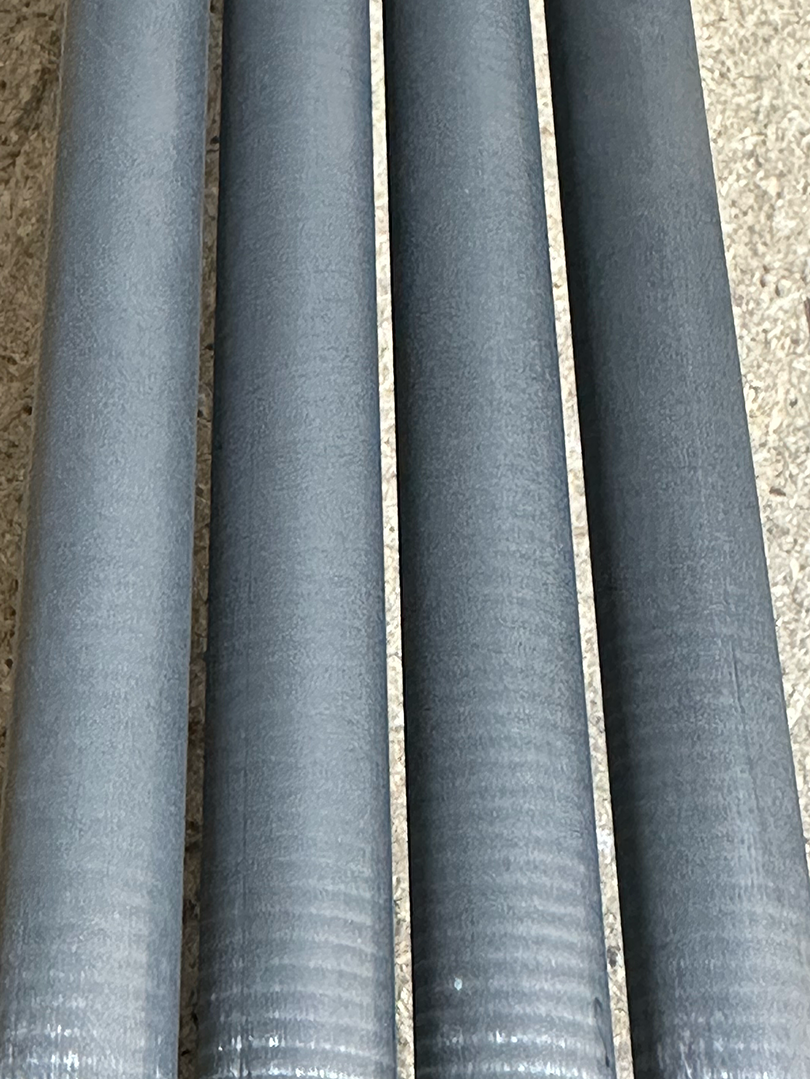
Matt Ground UD Blanks
Unidirectional blanks can be linished or ground to a smooth flat non flash finish. Small variations in surface appearance may be visible which are a characterisitic of unidirectional prepregs.
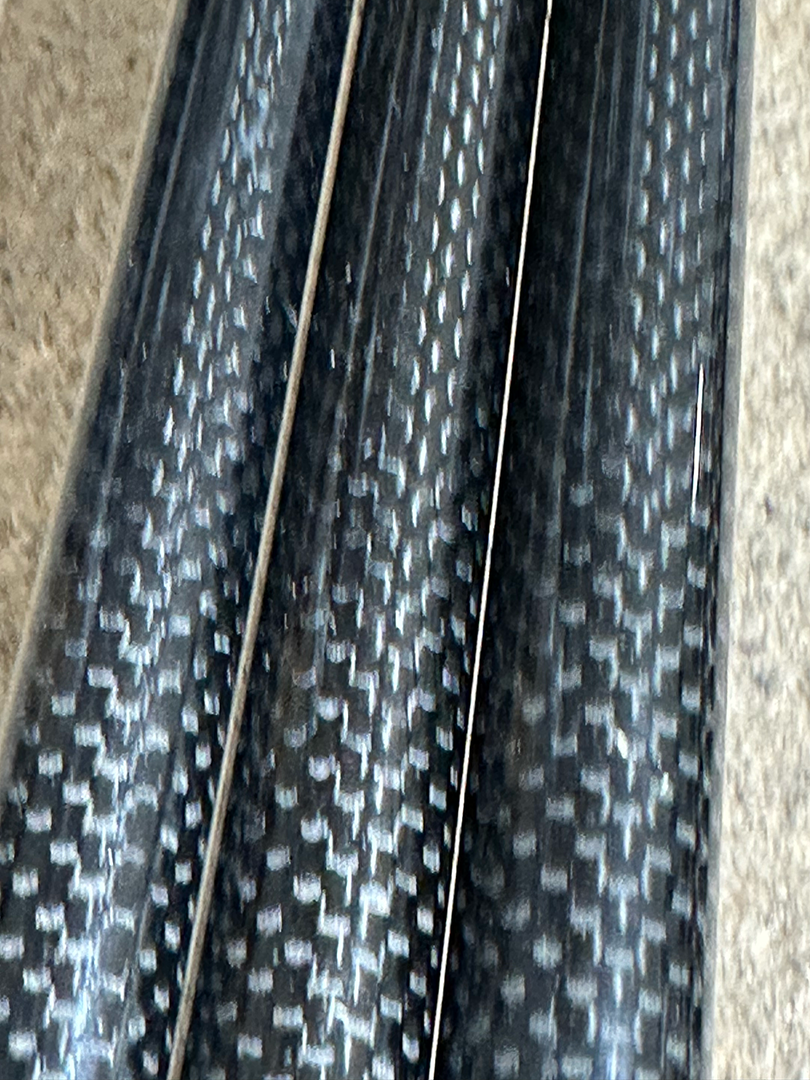
3k Gloss blanks
A clear gloss coating is available for a small extra charge.
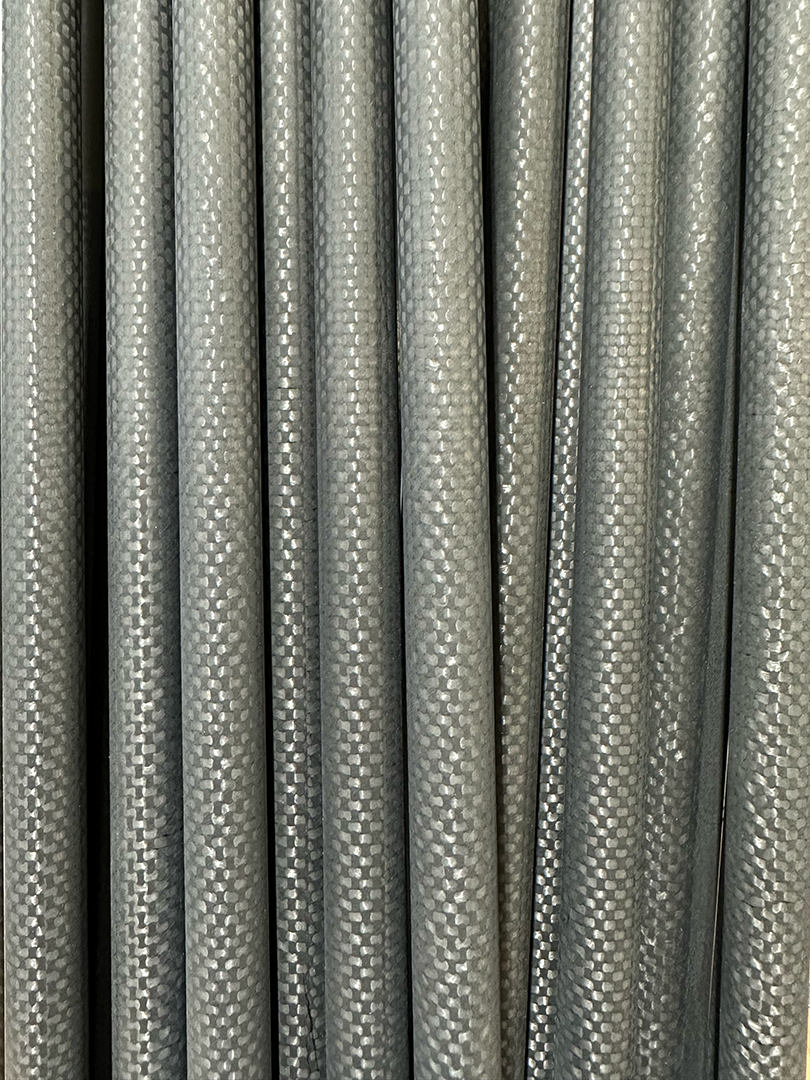
1K Matt Blanks
1K carbon is carbon woven from 1000 filament “tows” and is used on many of our carp rods. In this natural matt finish it is more scratch resistant than coated finishes and can be cleaned with solvents and brought back to new appearance after years of use.
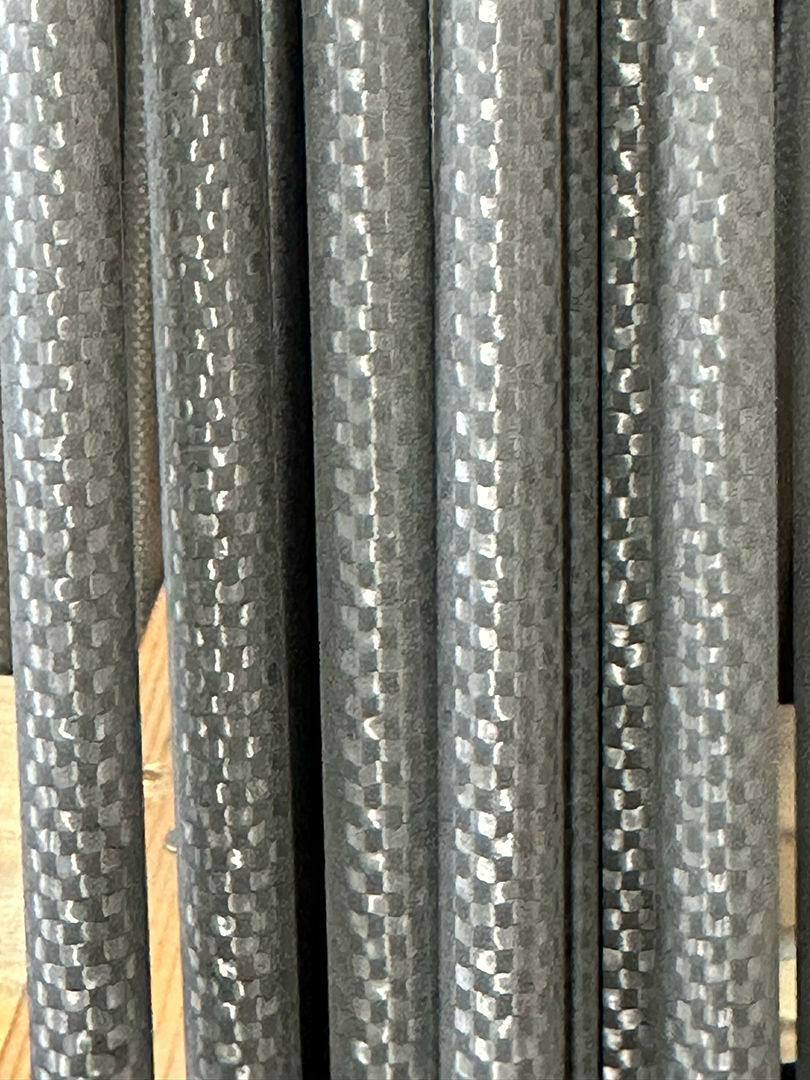
3K Matt Blanks
3K means carbon woven from 3000 filaments and is a tough and attractive top layer we use on some Trebuchet and Chimera rods.
Our favourite blanks include: Avon 1lb 6oz blank in UD carbon. A slim traditional blank for small rivers – 12′ SUSU 3pce float. A float rod capable of taming big carp yet light in the hand – Torrix 12′ 3.25. The all-round carp rod with a huge reputation. – 12′ Aviator Plus. Our flag ship carp rod – 13′ Aviator Plus 2. A 3 3/4 lb long range carp rod that is a pleasure to use – 13′ Trebuchet UFR. An extreme range rod that is breaking distance records – Aviator 10′ Spod. A remarkable small rod that has cast a spod 180 yards in development. And if you need the blank building, click here for rod builders.
Starting with rolls of raw carbon fibre prepreg, we design and hand make all our blanks in our Liverpool factory.
Woven and UD carbon fibre – the difference.
Carbon fibres can be made into all sorts of fabrics in a similar way to natural materials like cotton, but the most important type of carbon used in rods is not a wovem fabric but unidirectional prepreg, or UD for short. This is a non woven material that is formed by bringing together a number of separate tows of carbon fibre that are loaded on a creel. Tows are bundles of parallel fibres that can be anything from one thousand filaments (1k) thick to 24 thousand (24k). The Tows are spread on multiple rollers until they are flattened uniformly. Epoxy resin is introduced in a carefully metered quantity. The epoxy at this stage is very high viscocity, and once introduced and rolled flat serves to hold the fibre together in the form of a flat tape.
This epoxy resin does not cure at room temperatures like epoxy adhesive, but needs high temperature to encourage the crosslinking needed to cure.
UD prepregs are the back bone of all modern carp rods, sometimes visible, often hidden under a woven or painted top layer and here at Harrisons we have our carbon prepreg made to specific weights with carefully metered resin content and a range of high performance fibres.
Let’s move on to the woven carbons. There are two types of weave that are common in carbon fibre products. They are plain weave and twill weave. Twill is a woven patteren where the fibres do not go over and under single yarns or tows, but in the most common case, they go over and under two yarns or tows. These fabrics are very easy to lay in to complex shapes with curvature in more than one direction. They can be used to make a car wing mirror for example and they look good on a supercar facia. But fishing rods are long slim cones, and have curvature in only one direction and do not require this flexibility. For that reason we usually use plain woven fabrics as surfacing layers. These are available in 1k or 3k weaves, and are made on machines little different to the looms that used to be found in the mills of old. These fabrics add a little extra crushing strength and give a handsome appearance, but most of a rod performance is defined by the hidden UD layers below. The fibre choice, weight and orientation are the hidden ingredients in the mix. Choosing materials is a big poart of rod design.
The term “Rod Design” is often abused. Proper rod design is a process that starts with a blank sheet of paper that will be filled with drawings of patterns to be cut, specifications of fibres and mandrel tapers. It is what we do every day here at Harrisons.
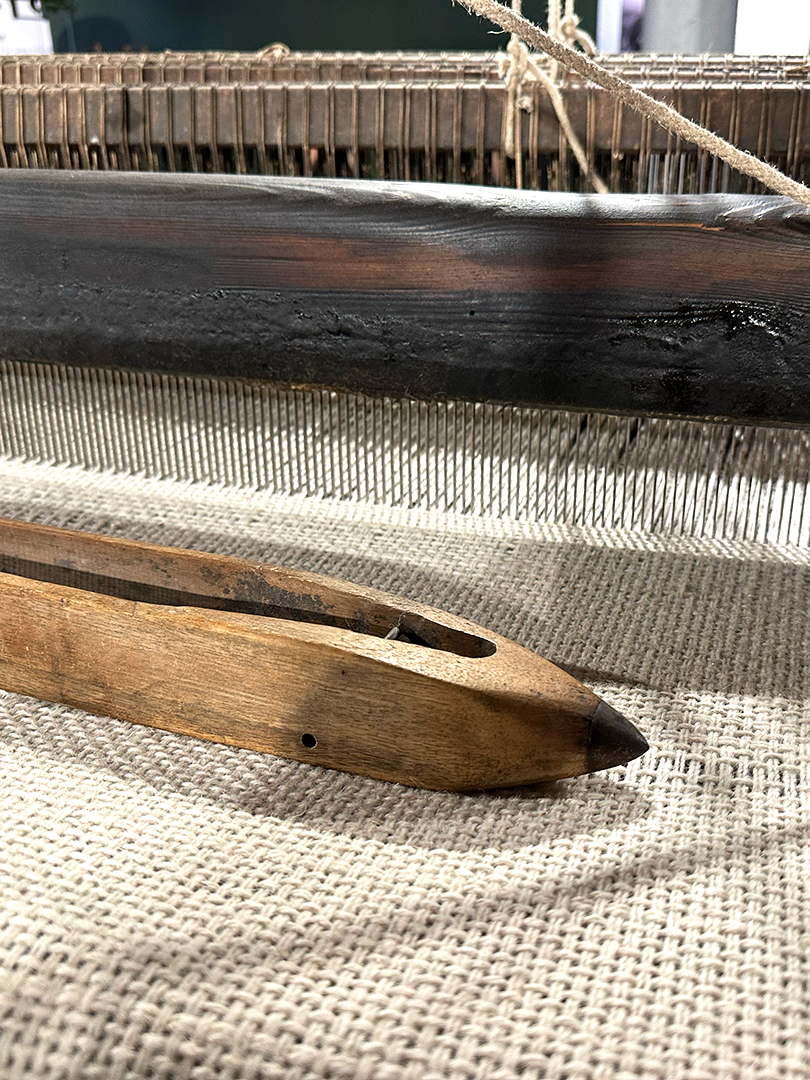
An old loom at Farfield Mill
One of the reasons that the UK is a centre of excellence for manufacturing in carbon fibre today is because it was once a centre for weaving textiles. This antique loom from Farfeld mill is a forerunner of the modern machines that weave carbon today.
Textile companies like Fothergill and Harvey have successfully moved from weaving cotton fabrics to high performance fibres today.

